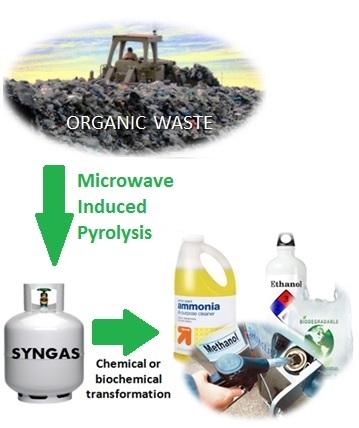Internationale Partnersuche
Innovation & Technologie Angebot
Organic waste microwave treatment process to produce syngas
Country of Origin: Spain
Reference Number: TOES20160725001
Publication Date: 20 September 2016
Summary
A Spanish R&D institute has developed a technological process based on obtaining syngas out of organic or lignocellulosic solid waste. The process is based on a two-steps microwave-induced pyrolysis. This method avoids the generation of unwanted by-products (such as pyrolysis oils), and does not create any kind of environmental pollution. Industrial machinery, device manufacturers, solid waste managers or energy producers are being sought to collaborate through a patent license agreement.
Description
A Spanish R&D institute has developed this method to produce syngas. Conventional methods for syngas production, such as plasma arc gasification, are expensive to develop and have a negative energy outcome, resulting in an enormous operative cost. The new method has a positive net energy outcome, making it an affordable alternative.
The process consists in the pyrolysis of the waste througout microwaves, leading to a gas (mostly H2 and CO), an organic oil and an inert solid. On a second step the organic oil is treated again and converted into gas. The solid product can be reintroduced into the process, reducing the amount of solid waste.
This process can be used for municipal solid waste treatment. The final gas can be used as an energetic gas similarly to a biogas, as it's easy to fit any H/CO proportion requirements and has a high purity (more than 95%).
The institute is looking for a manufacturer that could commercialize this technology through a patent license agreement.

Advantages and Innovations
- Doesn’t need any metal catalyst or gasifying agent (in plasma arc gasification, a steam or air stream is needed to ensure a good conversion rate).
- Pyrolysis happens at lower temperatures than plasma arc gasification's, and allows the reintroduction of the pyrolyzed inert solid into the process (producing a relatively small amount of waste output).
- Versatile and adaptive process, with high tolerance to different moisture levels and grinding sizes for the waste imput.
- Application: environmental and energetic sectors, in waste treatment and renewable energy production.
Stage Of Development
Under development/lab tested
Stage Of Development Comment
Tested on laboratory, it could be available for demonstration (depending on researcher's availability).
Requested partner
Machine or device manufacturers, solid waste managers or energy producers are being sought to collaborate through a patent license agreement.
Cooperation offer ist closed for requests

